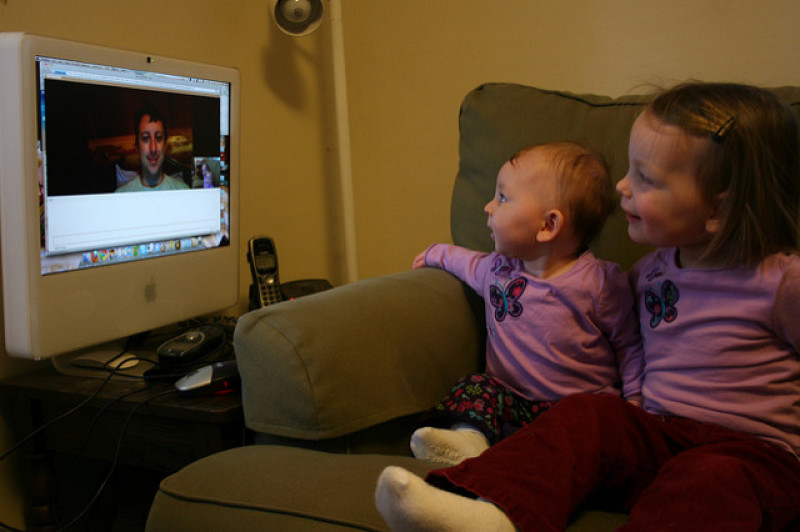
American Academy of Pediatrics has removed strict restrictions on screen exposure for children younger than 2 years of age in new guidelines released this month.
The AAP recommendations are based on studies which show that video chatting between infants and grandparents or other relatives engages their emotions differently than watching any cartoon on screen, and help toddlers learn new words more quickly.
In the earlier guidelines issued in 1999, AAP had suggested that kids younger than 2 years must not be exposed to screens. But this year they added one exception to it, which is video chatting with relatives.
Evidence from several research studies has shown that infants can differentiate between characters on TV and their grandparents in a video call which makes them react emotionally.
"New evidence shows that infants and toddlers regularly engage in video chatting, but the same principles regarding need for parental support would apply in order for infants and toddlers to understand what they are seeing," AAP said in a technical report.
"Because video-chat episodes usually are brief, promote social connection, and involve support from adults, this practice should not be discouraged in infants and toddlers," it continued.
AAP advises parents not to allow their infants and toddlers to use the digital media alone, but be present with them and help them in their communication with relatives. The group says that that when parents help the babies interact on video chatting, it helps them to learn language much faster than those who did not use digital media before the age of 2.
"In one longitudinal study of low-income families, 14-month-olds whose mothers had talked with them during educational TV programming since infancy showed more advanced language development than infants whose mothers did not talk with them during media use (although this finding also may have reflected how much mothers spoke to children in general)," the report said.
However, AAP draws a line between video chatting and watching media screens for kids younger than 18 months for whom no exposure to digital entertainment is still considered best choice.
The new AAP guidelines are not designed to promote "one rule for all," but gives families an option to develop their own media plan to suit their unique lifestyle.
For children in the age group of 2 to 5 years, AAP suggested 1 hour use of high-quality programs, which parents must watch with their kids together to help increase their coherence of the program and its application in real world.
Children above 6 years were recommended to impose consistent limits on time and types of digital media to accommodate healthy physical activity, social life, and adequate sleep.
AAP also advised people to have regular media-free hours during family times, dinner, and driving apart from media-proofing some areas in the house, such as kitchen and bedrooms.

















